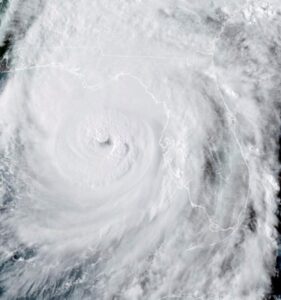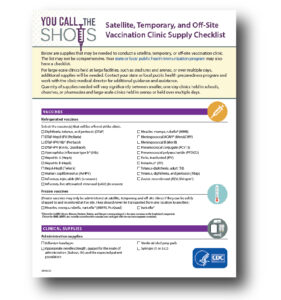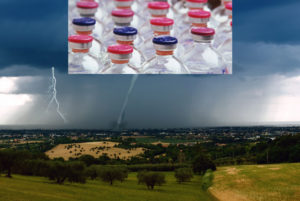 In this Bi-Weekly Issue In this biweekly issue: 🌀 How to Help 🆒 The Game-Changer 🦺 Command Central―Anywhere ⏳ Seconds Count As always, lots of information can be found on our website. Have a productive week! Learn | Practice | Improve A) How to Help In the Wake of Recent Disasters In the wake of Read More
In this Bi-Weekly Issue In this biweekly issue: 🌀 How to Help 🆒 The Game-Changer 🦺 Command Central―Anywhere ⏳ Seconds Count As always, lots of information can be found on our website. Have a productive week! Learn | Practice | Improve A) How to Help In the Wake of Recent Disasters In the wake of Read More In the Wake of Recent Disasters | Vaccine Transport or Off-Site Use | Command Central
 In this Bi-Weekly Issue In this biweekly issue: 🌀 How to Help 🆒 The Game-Changer 🦺 Command Central―Anywhere ⏳ Seconds Count As always, lots of information can be found on our website. Have a productive week! Learn | Practice | Improve A) How to Help In the Wake of Recent Disasters In the wake of Read More
In this Bi-Weekly Issue In this biweekly issue: 🌀 How to Help 🆒 The Game-Changer 🦺 Command Central―Anywhere ⏳ Seconds Count As always, lots of information can be found on our website. Have a productive week! Learn | Practice | Improve A) How to Help In the Wake of Recent Disasters In the wake of Read More 
 In this Bi-Weekly Issue In this biweekly issue: 💉 Vaccines vs. Worry 🆒 Electric-Free Temperature Titans 🦺 Alternate Care Sites ⏳ The Golden Hour, Delivered As always, lots of information can be found on our website. Have a productive week! Learn | Practice | Improve A) Vaccines vs. Worry Resources to help the latter. Vaccines
In this Bi-Weekly Issue In this biweekly issue: 💉 Vaccines vs. Worry 🆒 Electric-Free Temperature Titans 🦺 Alternate Care Sites ⏳ The Golden Hour, Delivered As always, lots of information can be found on our website. Have a productive week! Learn | Practice | Improve A) Vaccines vs. Worry Resources to help the latter. Vaccines  In this Bi-Weekly Issue In this biweekly issue: ✅ Vaccination Clinic Resources 🆒 A Vaccinator's Best Friend 🌡️ Choose Two Probes 💉 Vaccination Kits As always, lots of information can be found on our website. Have a productive week! Learn | Practice | Improve A) It's That Time of Year! Vaccination Clinic Clickable Links: CDC
In this Bi-Weekly Issue In this biweekly issue: ✅ Vaccination Clinic Resources 🆒 A Vaccinator's Best Friend 🌡️ Choose Two Probes 💉 Vaccination Kits As always, lots of information can be found on our website. Have a productive week! Learn | Practice | Improve A) It's That Time of Year! Vaccination Clinic Clickable Links: CDC  In this Bi-Weekly Issue In this biweekly issue: 📖 Unlock Your Nursing Potential 🆒 Keeping Vaccines Safe 🩺 Elevate Response Standards 🦺 Empower Your Staff As always, lots of information can be found on our website. Have a productive week! Learn | Practice | Improve A) Unlock Your Nursing Potential Dive into Top Learning Resources!
In this Bi-Weekly Issue In this biweekly issue: 📖 Unlock Your Nursing Potential 🆒 Keeping Vaccines Safe 🩺 Elevate Response Standards 🦺 Empower Your Staff As always, lots of information can be found on our website. Have a productive week! Learn | Practice | Improve A) Unlock Your Nursing Potential Dive into Top Learning Resources! 


You must be logged in to post a comment.